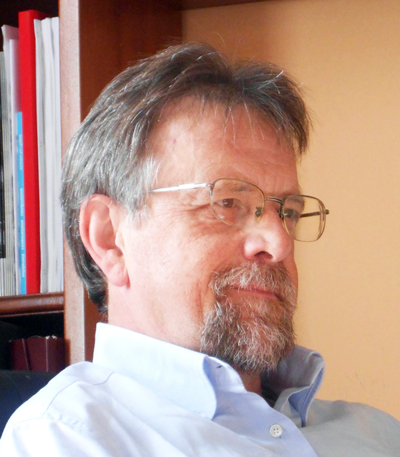
Italy at CERN Seventh edition happened in the first week of April. This is the event that opens CERN doors to the national excellences in industry that work in fields interesting for laboratory activities. The event is organized by the Italian Industrial Liason Office (ILO) at CERN, with the support of the Italian Chamber of Commerce for Switzerland and the Italian Permanent Delegation at the International Organizations in Switzerland. Thanks to ILO, Italian industries played a major role in the building of the Large Hadron Collider (LHC) and of its experiments. The return on these activities for Italian industries has been greater than the investment made by our country. Recently, ILO office’s activities expanded to other European research infrastructures, widening the strategic role of research and Italian industry relationship, that has its roots at CERN.
What were the new elements of this edition?
I would say, first of all, that the response of the companies was particularly strong this year, with 40 companies attending the event. Perhaps this outcome was the result of few contingent factors. The most relevant was probably the interest in the upgrade project of the LHC, HiLumi LHC, with which there will be many opportunities, already this year, for industrial orders which are expected to increase further in subsequent years. In this edition, prior to the event itself, a half-day workshop was organised with the heads of various CERN groups showcasing to companies the opportunities for collaborations with the industry in the coming years. The best use of the available time was made with individual meetings of companies, providing an on-line booking system, which was ultimately used to program more than 170 meetings. Finally, the companies were given access, for a whole day, to an expert on tax and regulatory ...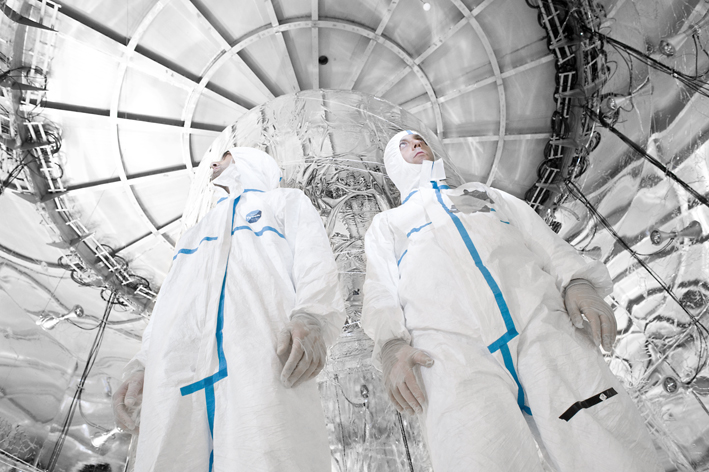 GRAN SASSO LABORATORIES: GERDA’S CHALLENGE TO MAJORANA’S NEUTRINO
GRAN SASSO LABORATORIES: GERDA’S CHALLENGE TO MAJORANA’S NEUTRINO
The GERDA experiment at the INFN’s Gran Sasso National Laboratories (LNGS) has reached a very important scientific milestone: it is the first and only experiment that can claim the title of “background free” experiment in the study of the extremely rare and never yet observed neutrinoless double beta decay. Measuring this process is both difficult and crucial. There is a fundamental property of neutrinos that is currently still unknown: we do not know whether neutrinos are Majorana particles, in other words identical to their antiparticles. If they were, we should be able to observe a process, the double beta decay, which is forbidden by the Standard Model of elementary particles. Expected by many other theories, such as those created to explain the absence of antimatter in our universe, this decay is never observed experimentally. The detection of this very rare phenomenon offers the opportunity to investigate unexplored regions of nature and provide important clues to the discovery of New Physics beyond the Standard Model. The search for neutrinoless double beta decay, however, implies a strenuous battle against other much more common natural events, "background processes", which simulate the sought signal, thus polluting it and making its detection difficult. ...
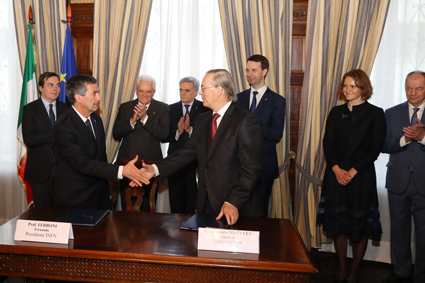
On April 12th, in the Italian Embassy in Moscow, and in the presence of Italian President Sergio Mattarella, the INFN and the Joint Institute for Nuclear Research (JINR) renewed their framework agreement on scientific cooperation. The agreement was signed by the President of INFN Fernando Ferroni and the Director of JINR A. Victor Matveev. ...
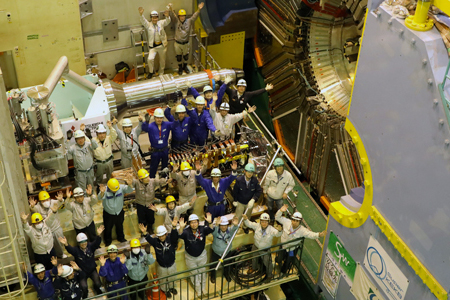
The Belle II detector is in place at the SuperKEKB accelerator’s point of collision, in the KEK laboratory in Japan. A crucial step towards the beginning of scientific activities of what will be the world's highest intensity accelerator was thus completed. Indeed, on the afternoon of April 11th, there was the successful completion of the "roll-in”, i.e. the positioning of ...
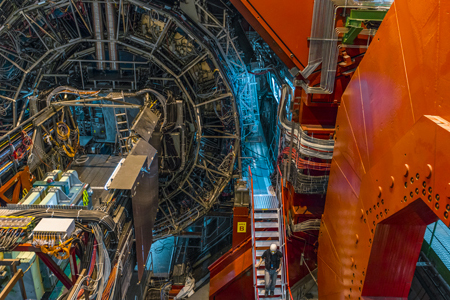
The ALICE experiment at the Large hadron collider (LHC) at CERN has observed for the first time in collisions between protons an increase in the production of so-called strange particles, which is one of the distinguishing phenomena of quark-gluon plasma, a very hot and dense state of matter which existed just a few millionths of a second after the Big Bang....
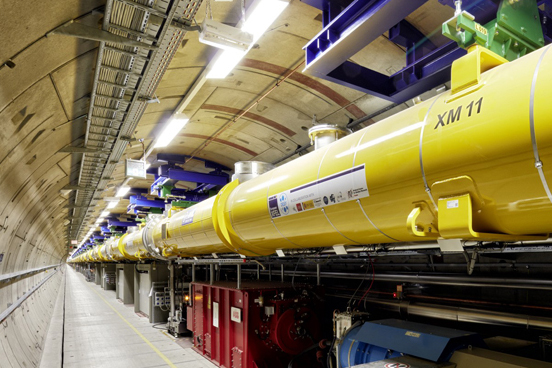
The European XFEL, the future European free electron super-microscope, successfully completed one of the last stages of its construction: the first beam of electrons was accelerated along the entire length of the machine, of 2.1 Km. The first superconducting linear accelerator in the world of this size has hence started functioning: this is a crucial step ...
cover image:
Entrance to the INFN Gran Sasso National Laboratories.
INFN - COMMUNICATIONS OFFICE
comunicazione@presid.infn.it
+39 06 6868162